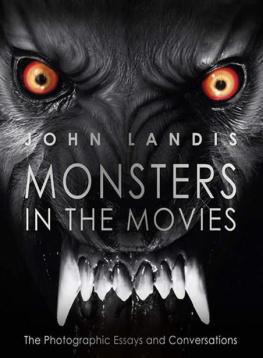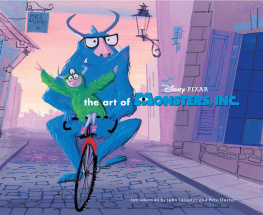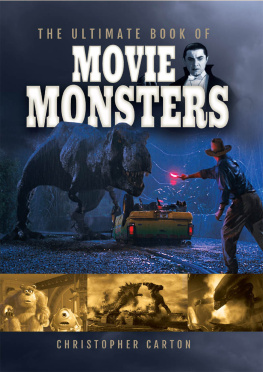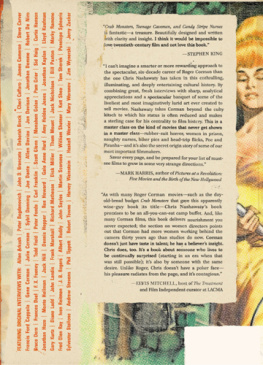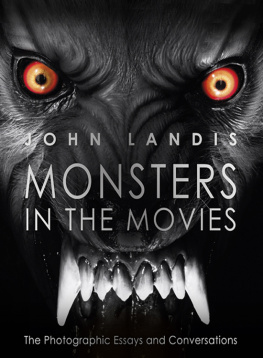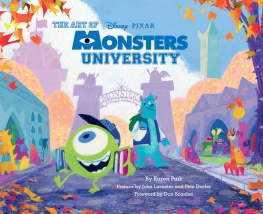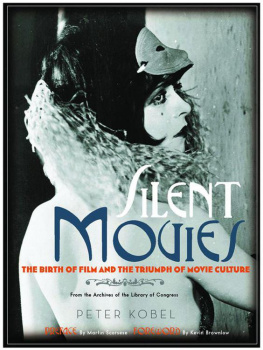Table of Contents
HOW TO USE THIS EBOOK
On devices with both portrait and landscape orientation, this book is best viewed in portrait orientation and with the type size set to minimum.
On touch screen devices, you can tap on any movies mentioned in the essays and conversations to go straight to that movies photograph and caption. If you double tap on any photograph, it can be enlarged.
The top of each screen features links to the chapter opener and to the table of contents.
FOREWORD
I busied myself to think of a story, which would speak to the mysterious fears of our nature and awaken thrilling horror. One to make the reader dread to look around, to curdle the blood, and quicken the beatings of the heart.
Mary Shelley, author of Frankenstein
Film as dream, film as music. No art passes our conscience in the way film does, and goes directly to our feelings, deep down into the dark rooms of our souls.
Ingmar Bergman, film director
Fantasy, horror, and science-fiction films are where most of the monsters in this book are to be found. These three genres have among the most ardent and faithful fans. Just Google horror film websites and see how many people are deeply passionate about this stuff.
There are many books about the movies, and like the movies, most of them are not that good. So I feel the need to clarify that this has been a labor of love and not a class assignment. This book is meant to be fun. It is not some heavy tome on the meaning of violence in the cinema, or a ponderous examination of film theory. This is a book with a lot of photographs of monsters in the movies. The films represented here are included not because they are necessarily good or bad films, but only because of the monsters that appear in them.
Even though this eBook is mostly photographic essays, included are some conversations with a few of my friends that will be of interest. I spoke with people who have made enormous contributions to the cinema, and in particular the cinema of monsters! Let me express my deep thanks and appreciation to Ray Harryhausen, Sir Christopher Lee, David Cronenberg, Rick Baker, Joe Dante, John Carpenter, and Sam Raimi for participating. You will be impressed by what these guys have to say.
Most of what is written here is from my memories of the films, with additional research at the Beverly Hills and Los Angeles Public Libraries, as well as the Internet for fact-checking names and dates. The Internet is an amazing source of information. It is an equally amazing source of misinformation, and often disinformation. The Internet allows literally anyone to say anything, which is a very sharp double-edged sword. Reading the Internet postings of some people, it is clear that the writers have issues far beyond whatever ignorant or hateful bile they are spewing forth. On the other hand, there are often thoughtful and fascinating insights to be found on the web (said the spider to the fly!).
I apologize for any factual errors (blame my editors for not catching them). However, I do take full responsibility for any opinions expressed. Just remember that the quality of anything is entirely subjective. Have a good time. I know I did.

]
Michael Jacksons Thriller [John Landis, 1983]
Michael as a zombie in this all-talking, all-singing, all-dancing horror film.
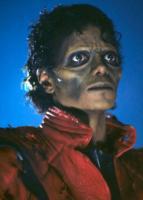
]
Triple-terror thrills
A one-sheet poster advertising a triple feature showing of [1948] would put on the costume and a rubber mask and, with other performers dressed as Dracula and the Wolf Man, rampage through the theater as the kids screamed with delight.

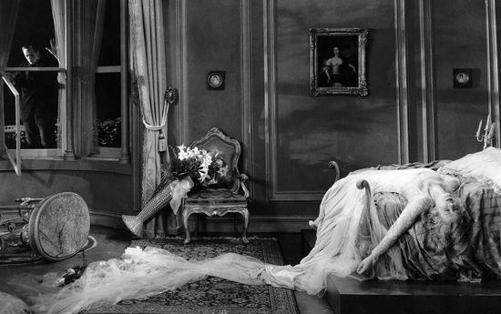
Boris Karloff and Mae Clarke in Frankenstein [James Whale, 1931].
INTRODUCTION
This guide is not meant to be an encyclopedia of every monster that has ever appeared in a movie. Nor is it my intention to write an exhaustive history of horror, fantasy, and science-fiction cinema. It is a pictorial overview of monsters from the movies that I have chosen. Most of the images come from The Kobal Collection; others come from friends who make monster movies.
My criteria for inclusion of a particular monster is simple: the illustrations in this volume are there because I think they are cool. Some have cultural and historic importance, some are terrifying, some are beautiful, some are repulsive, and many are just silly. Please remember my ambition is that of an entertainer, not of a scholar. You may learn quite a bit of useful and fairly esoteric information, but that is entirely up to you.
What is it about the movies that holds such power over the popular imagination? Although the medium itself is a relatively new one, pictures projected from strips of film to create moving images have had a massive impact on world culture. Hollywood movies and the international cinema have become the basis of what can only be described as our global mythology.
Montage is the juxtaposition of images to create a narrative. Even children, the first time they watch a film, instantly understand the concept of montage. When one is shown the outside of a building and then the characters inside it, the viewer understands this radical shifting of time and place at once. When we are presented with a close-up of a man looking out a window and then Cut To a car driving down the street, we do not have to be told that the car is what the man on screen is seeing (his point of view), we just know it. Human beings from around the world automatically accept and comprehend this film language.
Even more magically, when two characters are on screen and one says, You drive the car, and I will take a bus. We will go to the airport and fly to Paris. There you will rent another car and I will take a taxi and we will meet at the Eiffel Tower in two days. Then the screen CUTS TO: EXTERIOR EIFFEL TOWERDAY and our two characters approach one another and shake hands. All weve been shown is the Eiffel Tower and our two characters, and we instantly know that it is two days later, that one drove a car to the airport and the other took a bus. We know they checked in, went through airport security, boarded the plane, flew to Paris, got off the plane, went through Passport Control, and that one rented a car while the other took a taxi, both driving to the Eiffel Tower.
I believe that people instinctively understand film language because it is exactly the way we dream. I am sure you have heard someone say that the dream they had last night, was so vivid, so real, it was like a movie. Exactly. Our dreams are cinematic. And when we dream, we often have nightmares. Since the cinema is the perfect medium to depict our dreams, the movies have always been an ideal way to show our nightmares. Our nightmares are often populated with monsters. And that is the subject of this guide: monsters in the movies.
The word monster comes from the Latin monstrum . Monstrous means a perversion of the natural order, usually biological. The word monster is associated with something that is wrong or sinister. A monster is either physically or mentally detestable, often an aberration in appearance and behavior. The word monster is generally associated with the concept of evil, both in thought and action. Normal-looking people who behave in reprehensible ways are also referred to as monsters.
Next page
